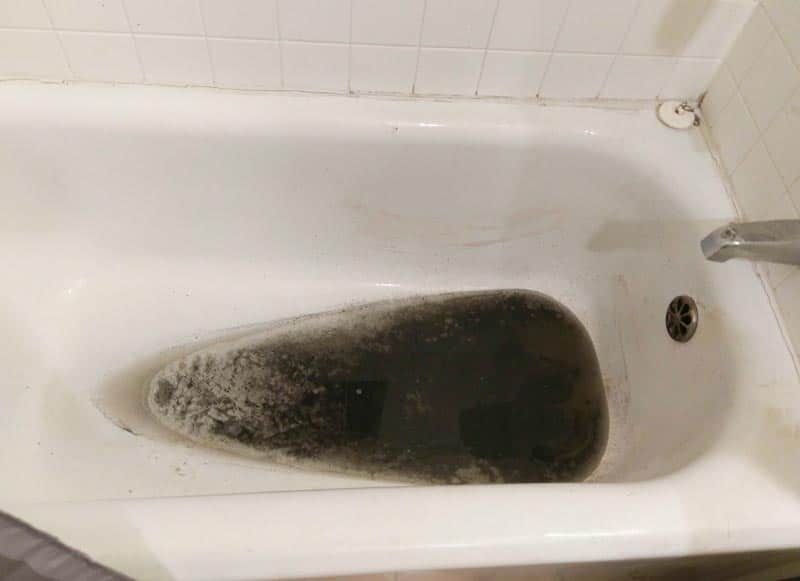Recommended Reasons for Sewage Coming Up in the Bathtub
Recommended Reasons for Sewage Coming Up in the Bathtub
Blog Article
What're your opinions on Water Coming up Bathtub Drain?

Sewer backup in the bathtub can be an upsetting and unsanitary issue for any house owner. Not just is it troublesome, but it likewise poses serious wellness risks and shows underlying problems with the plumbing system. Understanding why sewer is coming up through the tub is crucial for taking ideal action to attend to the trouble effectively.
Intro to the Issue
Usual Reasons for Sewage Back-up
Obstructions in the Drain Line
Among one of the most typical reasons for sewage backup is an obstruction in the drain line. This can occur due to the build-up of debris, oil, or international things in the pipes, protecting against appropriate circulation and triggering sewer to support into your tub.
Tree Root Breach
Tree origins seeking wetness and nutrients can infiltrate sewage system lines via small splits or joints. With time, these roots can grow and increase, creating significant damage to the pipes and leading to sewer back-up problems.
Comprehending the Trouble
When sewage starts backing up right into the bath tub, it's a clear indicator of an issue with the drain system. The wastewater that ought to be streaming away from your home is rather discovering its back into your home, which can cause substantial damages and health hazards.
Prospective Causes
A number of variables can add to sewer back-up in the bathtub. From clogs in the drain line to issues with the plumbing facilities, determining the origin is essential for discovering a remedy.
Aging Framework
Older homes may have dated plumbing systems that are more vulnerable to corrosion, fractures, and degeneration. As pipes age, they come to be extra prone to leakages and blockages, enhancing the possibility of sewer back-up cases.
Heavy Rainfall or Flooding
Throughout periods of heavy rainfall or flooding, the drain system may come to be overloaded with excess water, causing back-ups and overflows. This can cause sewer backing up right into tubs and various other fixtures inside the home.
Indicators of Sewer Back-up
Foul Odors
Undesirable smells emanating from drains pipes or components, particularly in the shower room, might show sewage back-up issues. These smells are frequently solid and persistent, signifying a problem that needs immediate focus.
Slow Draining Fixtures
Tubs, sinks, and bathrooms that drain slowly or not in any way could be experiencing sewage backup. If several components are impacted at the same time, it's likely that the issue stems from a common factor, such as the main sewage system line.
Gurgling Noises
Odd gurgling or gurgling noises originating from drains when water is running somewhere else in the house are indicative of air entraped in the plumbing system. This air build-up can arise from sewage back-up and ought to be examined promptly.
Wellness Dangers Connected With Sewage Back-up
Contamination of Water System
Sewer backup can contaminate the supply of water in your home, posing a major wellness danger to you and your family members. Exposure to infected water can lead to intestinal concerns, skin infections, and various other health problems.
Mold and mildew Growth
Moisture from sewer backup can develop suitable conditions for mold development in your home. Mold and mildew spores can intensify respiratory system problems and cause allergic reactions in sensitive people, making prompt cleaning necessary.
Spread of Condition
Sewer includes damaging microorganisms, infections, and parasites that can trigger a variety of diseases, consisting of liver disease, cholera, and gastroenteritis. Coming into contact with sewer or polluted surface areas puts you at risk of infection.
Cleaning Up After Sewer Backup
Disinfection Procedures
Extensively disinfect and sanitize affected areas after sewage backup to get rid of damaging microorganisms and prevent mold and mildew development. Use suitable cleansing items and safety gear to guarantee risk-free and effective cleanup.
Remediation of Affected Areas
Fix any kind of damage to flooring, walls, or fixtures brought on by sewage backup. Depending on the level of the damage, you may need to replace carpeting, drywall, or various other materials to recover your home to its pre-loss problem.
Immediate Actions to Take
Switching Off Water Supply
In case of sewage back-up, it's important to switch off the water system to prevent additional contamination and damages. Locate the primary water shutoff valve in your home and shut it off till the concern can be solved.
Speaking To a Professional Plumber
Managing sewage backup is not a DIY work. Get in touch with a licensed plumber with experience in managing sewage-related issues to assess the circumstance and carry out required repairs or cleanups.
Staying Clear Of Contact with Infected Water
Until the sewage back-up is settled, prevent contact with polluted water to stop the spread of bacteria and pathogens. Wear safety equipment if you need to remain in the affected area and clean your hands extensively later.
Preventive Measures
Routine Maintenance of Sewer Lines
Schedule routine assessments and maintenance of your sewer lines to recognize and deal with prospective issues before they escalate right into significant issues. This can consist of cleaning out debris, checking for tree root intrusion, and repairing any kind of broken pipelines.
Installing Backwater Valves
Take into consideration installing bayou shutoffs in your plumbing system to avoid sewage from flowing back into your home during periods of heavy rainfall or flooding. These valves immediately close when water draws back up, protecting your building from contamination.
Correct Disposal of Household Waste
Avoid purging anything other than bathroom tissue and human waste down the toilet to stop obstructions and obstructions in the drain line. Dispose of grease, oil, and other home chemicals appropriately to minimize the threat of plumbing troubles.
Why Is Water Backing Up in My Bathtub When I Flush My Toilet?
What to do about a sewer line clog
First, don’t bother with plunging. No amount of plunging will dislodge the clog in a sewer line. The clog is too far away. Plungers are for clogs in the toilet itself, not the sewer line. Plus, the most likely causes of a sewer clog are:
Tree roots Flushed toys or feminine products Grease buildup Those items don’t move easily. And in the case of tree roots, the roots need to be cut out of the pipe and the pipe will need to be repaired.
You’ll need a closet auger. A closet auger is a type of plumber’s snake with a protective cover to keep from scratching the delicate porcelain toilet. If the clog is further down, you may need to remove the toilet or use one of your cleanouts to get to the clog.
We also recommend doing a video inspection of the drain to ensure that the cause of the clog has been completely removed. Otherwise, you could have the same problem again in a few days or weeks.
https://mspplumbingheatingair.com/blog/why-is-water-backing-up-in-my-bathtub-when-i-flush-my-toilet

I was shown that write-up on What To Do If Sewage Starts Backing Up Into the Shower through an acquaintance on another blog. Sharing is good. Helping people is fun. I treasure reading our article about What To Do If Sewage Starts Backing Up Into the Shower.
Details Here
Report this page